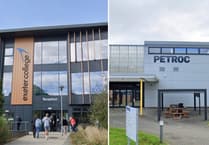GREEN Party councillors in Exeter say a study suggesting the city centre is the greenest in Britain doesn’t show the true picture.
Last week researchers at the University of Sheffield revealed how they had looked into 68 urban centres with populations of at least 100,000, ranking them on tree cover, vegetation and parks in the heart of the city centres.
Exeter topped the list with Islington and Bristol coming second and third.
But Green Party councillor for St David’s ward, Tess Read, suggests it is misleading to focus on the centre alone.
“We welcome the fact that Exeter has been named as the greenest urban centre in the UK,” said Cllr Read. “However, as the study itself says, this conclusion is reached by assessing just the heart of city centres, and does not take account of the wider city area.”
Sheffield is considered to be the UK’s greenest city overall with more trees per person than any city in Europe and its reputation is boosted by its location near the peak district.
Cllr Read says: “Few will have failed to notice that Exeter’s green spaces beyond the city centre are not just being nibbled away at, they are being swallowed whole,” she said.
“Large scale developments within and beyond the city boundary are rapidly destroying our precious green spaces.
“And while Exeter is extremely fortunate to have its parks, there is a constant assault on our street trees which are frequently being cut down and not replaced.”
The University of Sheffield study estimates that by 2050 nearly 70 per cent of the world’s population will be living in towns and cities. Therefore the importance of green space for physical and mental wellbeing will become increasingly important.
Cllr Read added: “As Greens, we want a city where wildlife and biodiversity thrive and people have access to green spaces within a short walk from their home, both in the small urban centre and throughout the entire city.
“Mount Radford Lawn in St Leonard’s, for example, provides a good test as to whether the Labour-led council is willing to act to protect green spaces in the city.”
The comments come as people in Exeter are being given more time to provide their views on the first local plan for a decade which includes proposals to steer the majority of development towards brownfield sites while considering only “modest” development on greenfield sites.
Philip Churm
LDRS





Comments
This article has no comments yet. Be the first to leave a comment.